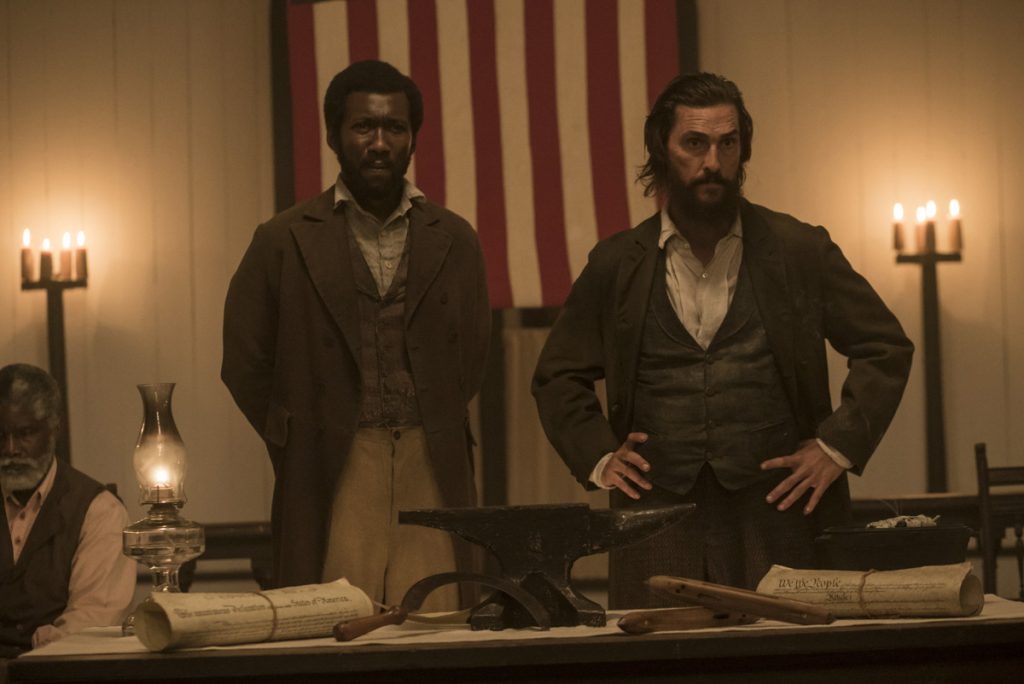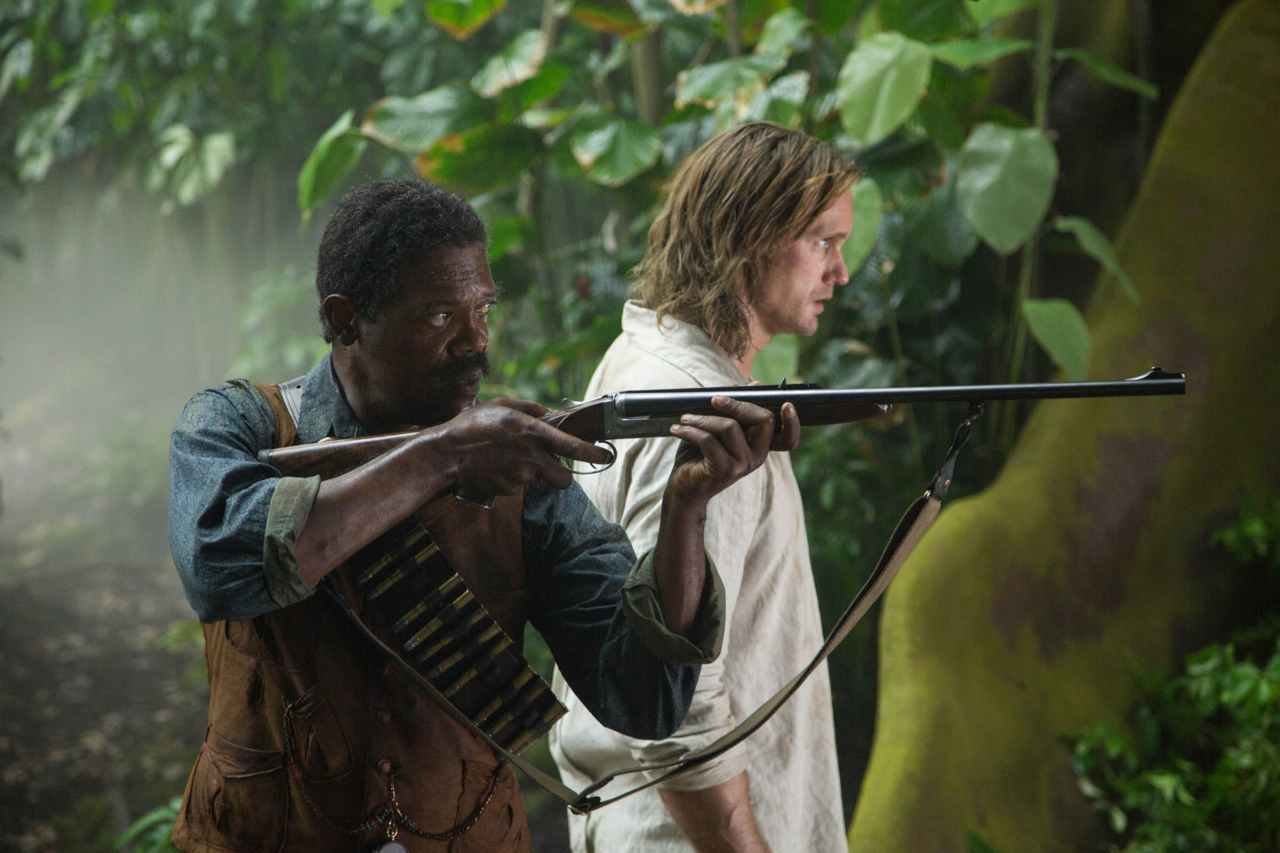Sociologist Matthew Hughey studies the relationship between the varied interpretations of racial meanings and the prevailing structures of racism and racial inequality. His book The White Savior Film: Content, Critics, and Consumption (Temple University Press, 2014) addressed the cinematic trope of the white savior in film. With the recent release of two new films – an update of the Tarzan legend and the story of Newton Knight during the Civil War – he discussed the genre with UConn Today.
Q: “The Legend of Tarzan” and “The Free State of Jones” are the most recent of what you describe as “white savior” or “noble savior” films. Why does this kind of film continue to be made?
A: Both films highlight white characters whose innate sense of justice drives a tale of racial cooperation, nonwhite uplift, and white redemption. In a climate in which many whites now believe that they – not people of color – are the true victims of the racial order, or who claim a kind of racial fatigue over listening to folks of color “complain” about racial inequality, and those who may even hold a latent desire to see evidence of a post-racial era, films that demonstrate a messianic white character reaching across the color-line certainly resonate.
Q: In the introduction to The White Savior Film, you write that the 1980s is the point where the first group of white savior films emerge, such as “Cry Freedom,” “Mississippi Burning,” and “Glory,” noting it also as the beginning of “a kind of racial schizophrenia in the United States.” How did these films contribute to that environment?
A: On the one hand, various institutions began a process of re-segregation. The continued effects of racial segregation, years after Brown v. Board of Education (1954), contribute to negative outcomes for people of color. Such enduring inequality manifests in racialized effects in gentrification and home mortgage lending, health disparities, unemployment, and the wealth gap, to name just a few.

On the other hand, many began to remark or believe that the United States had reached a “post-racial” or “color-blind” state in which racism was either dead or the provenance of only a few bad apples. Given the racially segregated character of the United States, many within its borders spend little time interacting with people of different racial or ethnic groups. And this point is particularly true for whites. Nearly 90 percent of suburban whites live in a community where the black population is less than 1 percent, and whites are the most likely racial group to experience extreme segregation – little to no intimate contact with people of other racial groups. In that context, approximately two out of three moviegoers are white, and popular films about race and racism offer people, especially white folks, narratives for experiences they are likely not to have in real life. In fact, in the absence of lived experience, films are often understood as “authentic” reflections of real life and become our very own historiographers, framing what counts as history and collective memory for the greatest number of people.
During racially unsettled times, whether on the heels of Jim Crow or in the midst of Black Lives Matter, cultural producers of film face the challenge of presenting our own collective racial sentiments back to us, and Hollywood has met this challenge with a cadre of racial redemption stories, in which whites reach across the color-line to supposedly help downtrodden people of color.
This fiction is incredibly popular and represents what I call “White Savior films” (WSFs). It certainly resonates with White understandings of themselves and meets the demand that Hollywood producers and writers combat their own history of overt racist film-making. Accordingly, WSFs can support demands for on-screen “diversity” and even showcase stories that are ostensibly billed as being about folks of color, while they include a bevy of white heroes to save the day, who always hold the real power, are the cause of any cinematic rising action, and the solution to any conflict.
Q: Is the reinterpretation of a well-known story such as Tarzan simply political correctness in the 21st century or does it actually help to change people’s views about issues of race?
A: Originally published as “Tarzan of the Apes” in 1912, the story [by Edgar Rice Burroughs] became very popular, and by 1918, the silent film “Tarzan of the Apes” graced movie palaces across the country. The admiration for “Tarzan” continued into the 1940s, with over 20 book sequels, and the character become ensconced in our public imagination. I don’t see how the latest Tarzan movie, released in July of 2016, can change people’s views about issues of race when it relies on centuries-old racist tropes.
The latest Tarzan film does bow to some political correctness by inserting a black character, played by Samuel Jackson. The character represents an actual historical figure – George Washington Williams, who authored the first definitive history of Black America: The History of the Negro Race in America, 1619-1880, and who addressed King Leopold II [of Belgium] about genocide in the Congo. In the film, we do not learn about the true life of Williams, but rather we see Williams reduced to a sidekick character who goes to Tarzan to ask him for help in alleviating the Congolese atrocities. On the other hand, we also have the supremely racist white person for the White Hero to bring down and to prove that he’s really not racist – the Belgium industrialist “Rom” [played by Christoph Waltz], who does his job as the evil, racist, white guy quite well.
Q: You’ve said in your study of such films that both white and minority audiences are often satisfied by these films, but described that as “dangerous.” Why?
A: I see these films as what we call “hegemonic”– in that they garner our consent to these fictitious narratives. That is, many audiences either believe these tales are real, especially when the beginning of the film runs the phase “based on a true story, or they take these films as either accurately representing or honoring specific inter-racial relations in which there is no agency, freedom, justice, or even as thought that comes from people of color. Rather, all social uplift comes from a white paternal figure. That’s a dangerous narrative, because it is a form of white supremacist logic that is not as overt or hateful on its surface, but is papered over with the patina of assistance and help, but nevertheless remains racially unequal to its core. While the majority of movie-goers are white, WSFs generally do very well at the box office across demographics, and especially during Oscar season.
Q: In what is sometimes described as post-racial America, is there still an audience for white savior films?
A: Yes. Given the trepidation and disquiet experienced by whites’ place and purpose in the age of Obama, some might find it strange to turn to cinema. However, the social practice of consuming film has proved an efficacious strategy for promoting economic stability, stabilizing national identity, and endorsing both implicit and explicit racial messages. Entertainment and consumption have often been officially hailed as a solution – or at least a distraction – from the problems of the real world. Whether in “Dances with Wolves,” “Finding Forrester,” “Dangerous Mind,” “Gran Torino,” “Freedom Writers,” “The Last Samurai,” “The Blind Side,” or “Free State of Jones,” the based-on-a-true-story message is strikingly similar, and provides a roadmap for the navigation of race relations.



